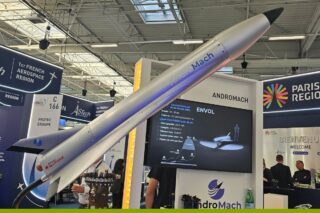China’s rapid advancements in generative artificial intelligence (GenAI) highlight its determination to lead the global AI landscape.
The significant surge in GenAI patent filings—nearly 50% of the global total—reflects the country’s aggressive push toward technological leadership. This drive is not only reshaping industries but also setting new standards for innovation, positioning China as a formidable contender in the AI race, says GlobalData, a leading data and analytics company.
Kiran Raj, Practice Head of Disruptive Tech at GlobalData, comments:
“China’s aggressive pursuit of GenAI patents positions the country as a major player in the global AI revolution, directly challenging the US in the race for technological supremacy. This drive aligns closely with China’s stated objective of achieving global AI leadership by 2030.”
Anil Sharma, Practice Head of Patents Analytics at GlobalData, adds:
“The continued growth in China’s GenAI patents suggests that we may see new breakthroughs in diverse applications, including but not limited to artistic image generation, automated video and image creation and enhancement, speech synthesis, text processing, analyzing medical images, resource optimization, and power load forecasting. While challenges remain, the potential applications of these patents are vast and can have a profound impact on various industries.”
GenAI Patents
The Patent Analytics database of GlobalData’s Disruptor Intelligence Center reveals that China has accounted for 49.1% of global GenAI patents over the last three years, surpassing the US at 48.5%. Other countries, such as South Korea (0.7%), Taiwan (0.4%), and Australia (0.3%), trail significantly, showcasing that the GenAI landscape is currently a duopoly.
The analysis also highlights a substantial 48.9% year-on-year increase in GenAI patent filings from China in 2023 compared to 2022, with major contributors including the State Grid Corporation of China, Zhejiang University, Nanjing University, and Baidu. This surge indicates China’s efforts to enhance AI capabilities across sectors, from technology and media to semiconductors and automotive.
Moreover, an analysis of the patents filed by the four biggest technology companies of China i.e., Baidu, Alibaba Group Holding, Tencent Holdings, and Huawei Technologies shows a strong focus on developing large language models and generative adversarial networks across applications ranging from text processing and speech recognition to resource optimization and power load forecasting.
Chinese Companies
In the real-world setup, GlobalData’s Innovation Explorer database highlights how Chinese companies are advancing GenAI. For instance, Beijing-based Kuaishou Technology recently introduced the “Kling Large Model (Kling),” an AI model capable of generating realistic videos from text prompts using a diffusion-based transformer architecture (DiT). Kling directly challenges OpenAI’s Sora and Meta’s 3D Gen in the burgeoning video generation AI space, with its unique 3D spatiotemporal joint attention mechanism.
The database includes a variety of GenAI models and applications from the top Chinese technology companies. Notable examples include Huawei’s Pangu, a large language model tailored for the mining industry, ZTE Corp.’s telecom-oriented Nebula LLM, and Alibaba’s customer service-focused GenAI chatbot, Tongyi Qianwen.
Raj concludes:
“China’s rapid progress in GenAI highlights the country’s pivotal role in driving the global AI innovation. Continued research and development in this field can deliver groundbreaking advancements to revolutionize multiple industries. However, challenges such as ethical AI usage, data privacy concerns, and navigating international regulatory frameworks must be addressed if China is to secure global leadership in AI.”










